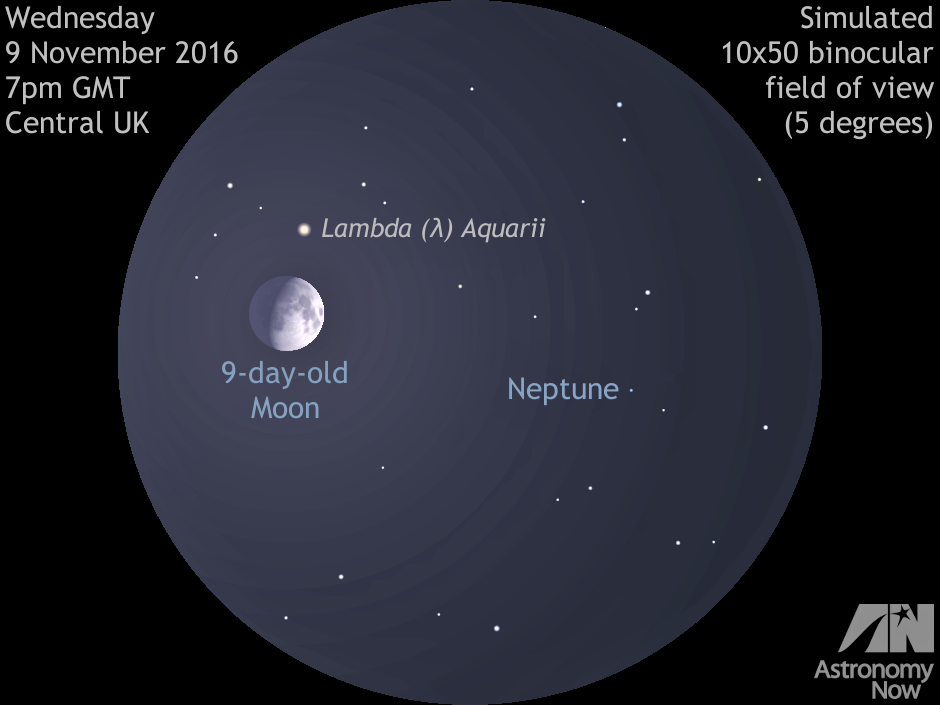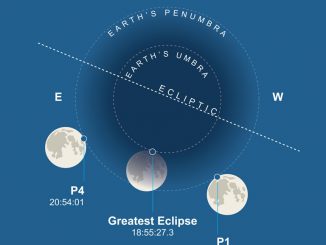
Observers in the British Isles wishing to see this juxtaposition of the Moon and outermost planet should look from the time night first descends, consulting the simulated 10×50 binocular view above to become familiar with the field stars around Neptune. Do try to position the brilliant lunar orb just outside the left-hand edge of the field of view in order to see the faintest stars shown that are of about the ninth magnitude. In binoculars, Neptune will appear a little brighter, just like a magnitude +7.9 star.
On the evening of 9 November 2016, Neptune lies 29.576 astronomical units, or 2¾ billion miles (4.42 billion kilometres) from Earth — almost twelve thousand times farther away than our Moon that lies virtually in the same line of sight. Consequently, even though it is almost four times the size of Earth, gas giant Neptune appears as a tiny 2.3-arcsecond-wide disc in medium-to-large backyard telescopes at high magnification.
Inside the magazine
For a comprehensive guide to observing all that is happening in the current month’s sky, tailored to Western Europe, North America and Australasia, obtain a copy of the November 2016 edition of Astronomy Now.
Never miss an issue by subscribing to the UK’s biggest astronomy magazine. Also available for iPad/iPhone and Android devices.




